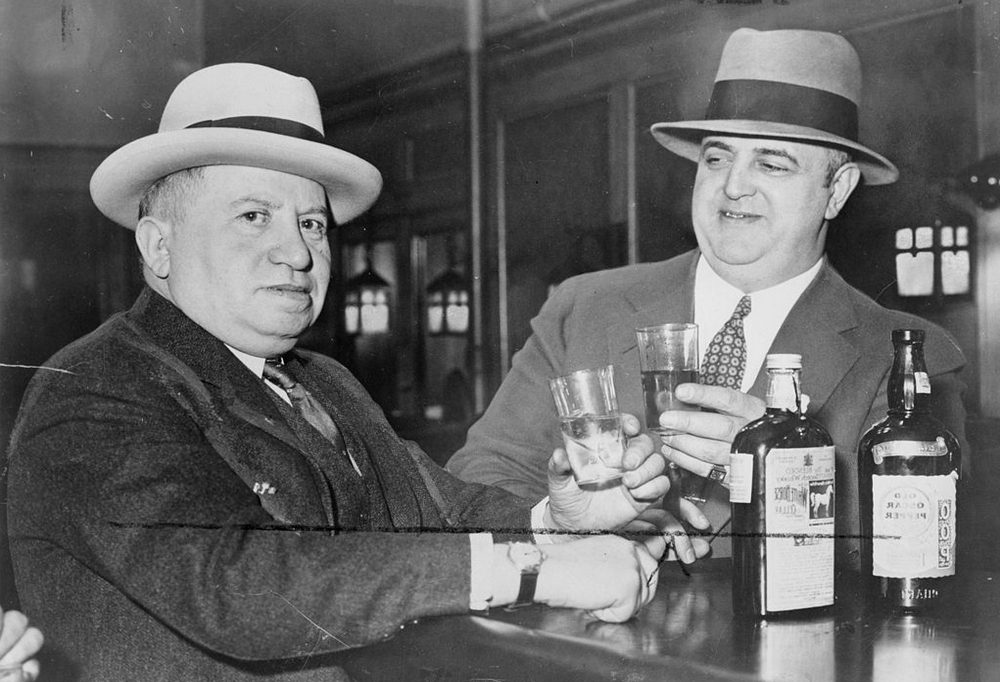The History Behind TWO PARTS BLOODY MURDER: Part 2– Law Enforcement in Prohibition
/This week we’re continuing on with our series of posts on the background behind TWO PARTS BLOODY MURDER, out next week in both hardcover and eBook. Last week we talked about the reasons for Prohibition that led to the 18th Amendment to the Constitution to the United States. This week we’re going to look at the actual legislation and the considerable challenges this legislation raised regarding enforcement. We’re also going to share a few tidbits from the novel, in this case, trivia bits that come from the chapter titles that hold some fascinating pieces of information.
The legislation behind the 18th Amendment was the Volstead Act, also called the National Prohibition Act. While the Amendment proper banned the production, storage, transportation or sale of intoxicating liquors, the Volstead act provided for its enforcement. According to the act, any beverage with greater than 0.5% alcohol was included. Of note, personal ownership of intoxicating beverages and actual consumption was not illegal.
The sudden termination of sales of alcohol through legitimate business afforded the black market and the mob a huge opportunity. These were people who had no interest in obeying the law in the first place and realized the incredible potential for commerce. The government might not allow the sale of alcohol, but the truth of the matter was that people still wanted to drink and would go to great lengths to do so. As we showed in last week’s excerpt, people were willing to roll the dice and take their chances with death for the opportunity to escape the dreary reality of their Depression-era lives. It was also a well-known ‘secret’ that many within the realms of government, the same people who legislated the Volstead Act, were not willing to cease drinking themselves. But these were people who could afford to purchase safe—but incredibly expensive, black market alcohol—and had the connections to arrange the transaction. It was the poor, scrambling to find anything to fill the gap, who died in the attempt.
Transgressions began as soon as the Volstead Act became law. The very first documented infringement occurred fifty-nine minutes after the Act became law when a train was robbed of $100,000 of ‘medicinal’ whiskey. Backdoor deals, violence, and robberies became the name of the game. Rival mobs would often try to steal from each other, and murder and crime rates soared. Gangsters like Chicago’s Al Capone first became rich on proceeds from their illegal activities and then became superstars in the public’s eye when they often used their ill-gotten gains to open soup kitchens for the starving and impoverished. A whole industry sprung up around the transport of international alcohols into the U.S. overland across borders from Canada and Mexico, and by water into any available port.
 Even within law enforcement, drinking was not verboten. In the following excerpt from TWO PARTS BLOODY MURDER, we see that two of the crack members of the U.S. Prohibition Unit were not above enjoying the fruits of their labours:
Even within law enforcement, drinking was not verboten. In the following excerpt from TWO PARTS BLOODY MURDER, we see that two of the crack members of the U.S. Prohibition Unit were not above enjoying the fruits of their labours:
Chapter Twelve: Izzy and Moe - a very effective team of Prohibition agents. While disguising themselves as vegetable vendors, gravediggers, streetcar conductors, fishermen, icemen, opera singers, and Democratic National Convention delegates, Isidor “Izzy” Einstein and his partner, Moe Smith, made 4,932 arrests and confiscated an estimated 5,000,000 bottles of illegal alcohol. After a busy day rousting Prohibition scofflaws, Izzy and Moe liked to sit back and enjoy their favorite beverages—beer and cocktails.

Companies also found some interesting ways to get around the letter of the law. The following excerpt illustrates an ingenuous example:
Chapter Five: Wine Bricks - a method to skirt the intent of the Eighteenth Amendment. Producing wine at home for personal consumption was not illegal during Prohibition. Wineries and vineyards dehydrated grape juice and compressed it into bricks. Buyers were reminded not to place the reconstituted juice in a cupboard for twenty days because it would ferment and turn into burgundy, sherry, claret, or some other type of wine.
It was completely legal to make up to 200 gallons of in-home wine per year, and many took advantage of that loophole in the Act.
We'll be back next week with our last post in the series as we take a look at how speakeasys became the social center for many during prohibition. But it was a mixed blessing for many:
Chapter Two: Blind Pig - an alternate name for a speakeasy. Possibly called a blind pig because the establishment turned a “blind eye” to Prohibition, or because consuming the often-contaminated illegal alcoholic beverages sold there sometimes caused blindness.
See you then!
Photo credit: Wikimedia Commons



 2.1%
2.1%